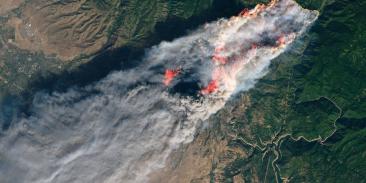New Analysis Outlines Substantial Coastal Restoration Cost-Savings Opportunities
Executing marsh creation sooner and leveraging bonding can save hundreds of millions of dollars
(Baton Rouge, LA – December 13, 2016) Earlier today, in conjunction with Restore the Mississippi River Delta released a new analysis prepared by The Water Institute of the Gulf (WIG) that outlines opportunities for the state of Louisiana to achieve substantial cost savings as it advances its 50-year, $50-billion Coastal Master Plan. The analysis, “Changing Restoration Costs,” examines the opportunities that exist for the state to achieve substantial cost savings, particularly related to marsh creation projects over time. Marsh creation, as a category, represents the single largest category of restoration costs in the state’s Coastal Master Plan. The findings showcase the tremendous opportunity to save hundreds of millions of dollars by moving projects forward sooner, whether through private investment or public funding or though bonding funds for future restoration projects whenever possible.
The analysis focuses on large marsh creation projects using dredged material where cost savings opportunities are significant. At roughly $18 billion, these projects represent the largest category of spending of any restoration project type in the master plan. To consider how these project costs might change over time, WIG examined seven distinct, 2,000-acre locations across coastal Louisiana with similar baseline conditions and applied five different scenarios of subsidence and sea level rise over time. Using 2012 master plan cost analysis and borrow areas, the study estimated costs needed to fill these locations and then converted to 2015 costs before applying 1 percent and 2 percent annual rates of inflation over 10-year increments. The study also examined potential cost savings by selling 10, 20 and 30-year bonds to finance projects that are planned, but where construction cannot begin immediately.
Factors such as increasing inflation rates and worsening environmental conditions can dramatically increase project costs. Additionally, as project areas are exposed to increased rates of subsidence and sea level rise, water levels will deepen, requiring more material to fill, further increasing costs. By executing marsh creation projects sooner, the state can avoid these cost increases in most cases.
“Louisiana must seek ways to build on the significant work CPRA has already executed to date by accelerating the funding of restoration projects,” said Coast Builders Coalition President Scott Kirkpatrick. “With over $10 billion committed to the Louisiana coast over the next 20 years, we must find ways to advance this funding, thereby allowing us to reduce project costs and realize marsh restoration benefits sooner.”
The study also shows the potential cost-savings realized by bonding future restoration projects. In total, leveraging creative cost-savings mechanisms, such as bonding, could achieve extraordinary savings on restoration costs. In one example highlighted in the analysis, bonding a specific project resulted in cost savings of $180 million – more than double the initial project cost. In another example, bonding a future project results in a 30 percent cost savings compared to waiting 10 years to finance and construct the project.
Future scenarios of sea level rise and subsidence will heavily influence future project costs. Even under the most hopeful scenario, cost per acre for marsh creation is projected to double in 20 years. As land loss increases over time and water levels continue to increase, more areas across the coast will exceed the threshold for executing marsh creation.
“Comprehensive, large-scale restoration is urgently needed now to restore Louisiana’s coast,” said Restore the Mississippi River Delta Campaign Director Steve Cochran. “These cost examples remind us of the opportunities that accompany that urgency, and the need to leverage sediment diversions and other restoration project types to ensure their long-term success.”
For more information: Visit MississippiRiverDelta.org/ChangingRestorationCosts
With more than 3 million members, Environmental Defense Fund creates transformational solutions to the most serious environmental problems. To do so, EDF links science, economics, law, and innovative private-sector partnerships to turn solutions into action. edf.org
Media Contact
Latest press releases
-
New Analysis Finds Indigenous Lands and Protected Areas Are Key in Slowing Deforestation; Without them Brazilian Amazon Forest Loss Would be 35% and Carbon Emissions 45% Higher
October 28, 2025 -
New Poll: Republicans, Democrats and Independents Strongly Oppose Weakening Chemical Safety Law
October 27, 2025 -
Court Rules New York Must Implement State Climate Law and Deliver Swift Action
October 24, 2025 -
EDF Goes to Court to Help Defend California Climate Risk Reporting Laws That Protect People from Financial Damage
October 24, 2025 -
Oregon Water Partnership Applauds Gov. Kotek’s Executive Order to Promote Resilience of Communities and Natural Working Lands and Waters
October 23, 2025 -
Community, Health and Environmental Groups Sue to Stop President Trump’s Unlawful Toxic Air Pollution Exemptions
October 22, 2025










